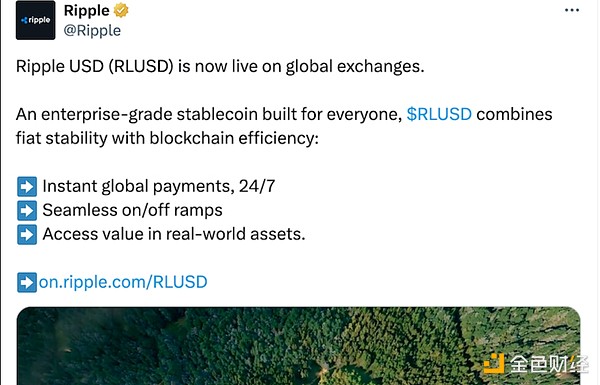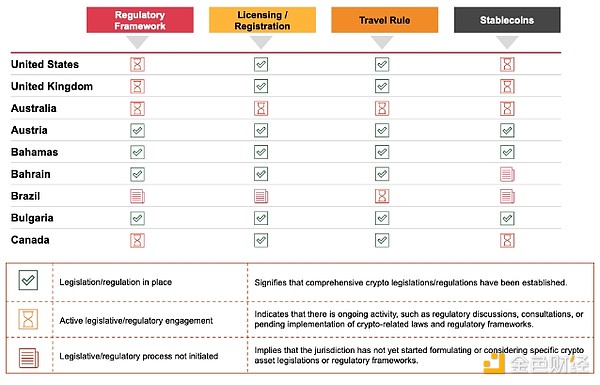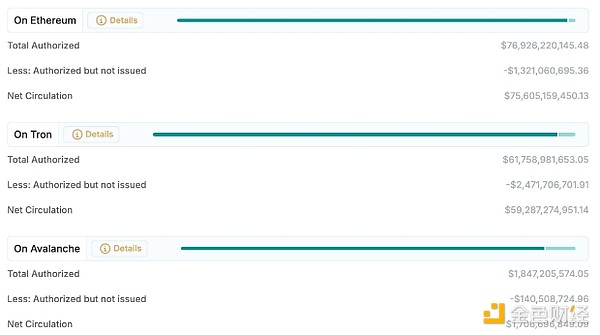Author: Helen Partz, CoinTelegraph; Compiler: Baishui, Golden Finance
Crypto stablecoins have been a huge success in 2024, with circulation reaching an all-time high of more than $200 billion in December.
Stablecoins - cryptocurrencies designed to mimic the value of a currency, most commonly the U.S. dollar - are an integral part of the crypto ecosystem, accounting for 5% of its market capitalization.
As 2025 approaches, this article summarizes the industry's predictions and forecasts for the main stablecoin trends next year.
$300 billion is the next stop: USDT and USDC will maintain dominance
Tether’s USDT and Circle’s USD Coin, the two largest stablecoins by market cap, are likely to maintain their dominance through 2025, according to multiple industry executives and founders.
Guy Young, founder of decentralized stablecoin protocol Ethena, predicts that USDT will continue to be the largest stablecoin next year, with the total stablecoin market cap rising to $300 billion.
“I expect us to exceed $300 billion in circulation, with Tether continuing to dominate with its existing moat, and the rest of the market being challenged by new fintech and Web2 entrants and their own products,” Young noted.

As of December 24, the top five stablecoins by market capitalization. Source: Coingecko
Stablecoins like USDT and USDC “have become important tools for global transactions, and their adoption in emerging markets and decentralized applications is likely to accelerate,” said Ailona Tsik, chief marketing officer at Alchemy Pay.
“Fiat-backed stablecoins like USDT and USDC are likely to maintain their dominance because they have established credibility, liquidity, and a broad ecosystem of users and businesses that rely on them.”
USDC partner Coinbase said in its 2025 outlook that stablecoins are “only getting started,” with some analysts predicting these tokens could grow to a $3 trillion market in the next five years.
Stablecoin Payments: Visa Expects Stablecoin Card Demand to Surge
Cuy Sheffield, head of cryptocurrency at Visa, noted that stablecoin adoption could modernize and simplify global payments, but existing stablecoin spending opportunities remain limited.
“If 2024 was the year stablecoin demand picked up, 2025 will bring the next key opportunity: the rise of stablecoin-pegged cards,”Sheffield said.
“Through 2025, this demand will only increase as wallets look to capitalize on stablecoin adoption and issue stablecoin-pegged cards.”
He said Visa will expand its capabilities to enable issuers to settle stablecoin-pegged cards directly with the payments giant using stablecoins.
Simon McLoughlin, CEO of crypto platform Uphold, is also optimistic about increased payment adoption in the coming year.
“2025 will be the year that stablecoins go mainstream as an international payment tool,” McLoughlin said. He highlighted new stablecoins targeting cross-border settlements, such as Ripple Labs’ Ripple USD (RLUSD), which began trading on December 17.

Ripple began transferring RLUSD out of exchanges on December 17. Source: Ripple
BitPay Chief Marketing Officer Bill Zielke said that while stablecoins only account for 5% of all transactions, they will account for at least a quarter of the crypto payment platform's transaction volume by 2024.
"While the average BTC transaction value at BitPay is just over $1,000, the average USDC transaction is over $5,000," he said.
"We expect this trend to continue into 2025 as stablecoins further solidify their role in global commerce and business-to-business payments," Zielke added.
Regulatory Divergence and the Need for a Consistent Regime Will Persist
While many are optimistic about the growth of stablecoins in 2025, regulation of stablecoins remains inconsistent around the world.
Alchemy Pay’s Tsik said: “One of the main challenges we foresee for stablecoins in 2025 is dealing with the evolving regulatory environment.”
BitGo’s head of stablecoins Ben Reynolds said regulatory uncertainty and the need for greater transparency will remain a significant challenge in 2025 until lawmakers provide clear guidance.

"Crypto Regulation at a Glance" in PwC's 2023 Crypto Regulation Report. Source: PwC
The stablecoin legal environment "will continue to face inefficiencies and fragmentation due to inconsistent regulatory regimes," Vishal Gupta, founder of True Markets, noted.
He cited the global regulatory divergence sparked by the introduction of specific stablecoin rules in the European Union, specifically the Markets in Crypto Assets (MiCA) regulation.
“Regulatory divergence can present opportunities in regions where rules are clear and balanced, but also challenges in regions where regulation is overly complex or restrictive,” Gupta said.
As U.S. President-elect Donald Trump prepares to take office in January, companies like BitPay are hoping for greater clarity and consistency in the way stablecoins and crypto markets are regulated.
Stablecoin Trends in 2025: L2, Yields, and Interoperability
Many industry executives predict that stablecoins will further develop in areas such as layer 2 (L2), yields, and interoperability next year.
BitPay’s Zielke said the adoption of L2 stablecoins on networks like Arbitrum, Optimism, and Base will be one of the biggest areas of development for tokens in 2025.
Tether CEO Paolo Ardoino said stablecoins “will become the most important monetary technology in the coming decades, and blockchain and L2 will integrate.”
BitGo’s Reynolds predicted that next year will see a push for greater interoperability between blockchains to enable stablecoins to be seamlessly transferred across the crypto space, which True Markets’ Gupta noted will unlock “new use cases in both retail and institutional markets.”

Ethereum, Tron, and Avalanche are the three major networks for USDT. Source: Tether
With the growing adoption of L2 and interoperability, the stablecoin industry may also see more yield-generating stablecoin solutions in 2025.
Azeem Khan, COO of Ethereum L2 platform Morph, emphasized that stablecoins such as PayPal USD provide yield rewards simply by holding stablecoins. Companies such as BitGo have also launched yield-generating stablecoins in 2024.
“There will be other yield-generating stablecoins entering the market, seeking to gain more holders and find ways to add them as a payment option,” Khan said.
The risks of ‘exotic’ stablecoins
True Markets’ Gupta said that as demand for stablecoin yields increases, “exotic” stablecoins – that is, stablecoins designed to offer higher returns – will increase.
“The quest for higher yields may lead to the creation of ‘exotic’ stablecoins that effectively act as structured financial products that hide risks that retail users may not fully understand,” he added.
Retail investors may be lured by the promise of higher returns without fully grasping the associated risks, which could result in significant losses, Gupta warned.
“Industry players must prioritize transparency, detailed risk disclosures and education for retail users. Regulators should set clear standards to protect consumers while maintaining room for innovation.”
 Alex
Alex










